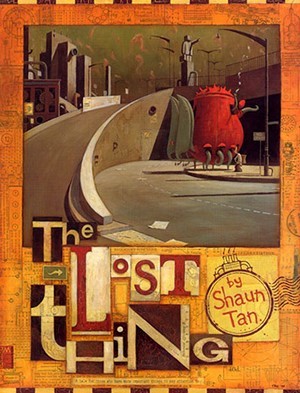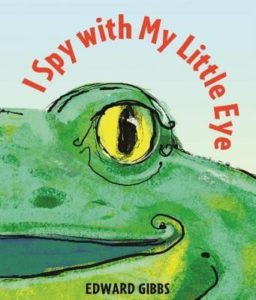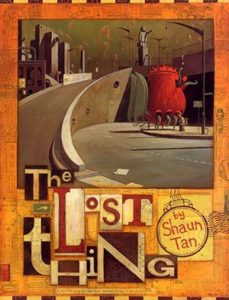
Books that make an impact
Two books my Kindy class have enjoyed recently are:
 I Spy with my little Eye by Edward Gibbs. This book gives children the chance to guess which animal is on the other side of the spyglass. They get a hint because they can see part of it. It doesn’t seem to matter when they know the answers – they just love the repetition and the chance to call out the answer again and again. A good little twist in the ending as well.
I Spy with my little Eye by Edward Gibbs. This book gives children the chance to guess which animal is on the other side of the spyglass. They get a hint because they can see part of it. It doesn’t seem to matter when they know the answers – they just love the repetition and the chance to call out the answer again and again. A good little twist in the ending as well.
No, David by David Shannon was also a success. You can always tell when you are asked to read it again the moment you finish. The text is very simple and mainly a variation on the title. It took a while for the children to grasp that the pictures show David doing unacceptable things such as making sculptures from his food or making way too much noise. But by the time we got to David running down the street with no clothes after his bath (a deliciously funny back view), they were all conspirators with David and enjoying his unsociable behaviour. I couldn’t help thinking how amazing it is that we turn these tiny naked-when-born human beings into three and four year olds who all think the sight a boy without clothes running away from his cross mother is a great joke. You can watch the video of this story here. 
If you are looking for picture books that suit all ages you can’t go past the work of Jeannie Baker or Shaun Tan. I suspect a child needs to be around 5 before they are likely to enjoy these books (please tell me if I’m wrong) but their insights and way of telling bring immense pleasure to many different age groups. You don’t need the excuse of having a child to read them to – as with many picture books you can read them for your own pleasure.
 Jeannie Baker’s Circle, for example, is about the wonder of the bartailed godwit’s journey from Alaska to Australia and New Zealand – the longest unbroken migration of any bird. Baker visited many of the locations along the way such as Alaska and China to select fabric, sand, vegetation and other unique materials to use in her beautiful mixed media collages. The book gently, yet compellingly, demonstrates how treatment of our own environment has far reaching effects on the lives of other living things both near and far.
Jeannie Baker’s Circle, for example, is about the wonder of the bartailed godwit’s journey from Alaska to Australia and New Zealand – the longest unbroken migration of any bird. Baker visited many of the locations along the way such as Alaska and China to select fabric, sand, vegetation and other unique materials to use in her beautiful mixed media collages. The book gently, yet compellingly, demonstrates how treatment of our own environment has far reaching effects on the lives of other living things both near and far.
Shaun Tan’s The Lost Thing is another book that appeals to many age groups. I recently visited the Grace Cossington Smith Gallery to see the exhibition Shaun Tan: The Art of Story. Discovering The Lost Thing. Book to Film. It is on there until August 18th, 2016. Tan is justifiably thought of as one of Australia’s foremost picture book creators. You can see the Oscar winning animated film version of this book here. [You have to watch a rather long advertisement first unfortunately!]
Look at the cover of the book, The Lost Thing. What do you see at first glance? Maybe you notice the book is/ is going to be a story set in a city – not quite an ordinary city but a familiar, recognisable city nonetheless. You may also assume/recognise the lost thing is something rather strange or unusual. Is that large reddish thing with the tentacles the ‘thing’? What can it be? Or you might have a very different set of responses when you look at this cover.
Now, I thought we might try an experiment. It isn’t a competition and I don’t think it matters if you are coming to this book for the first time or already know it well. But I really would love to hear about what you see and how you interpret the words and images on the cover when you look more closely at it. [You might prefer to google Shaun Tan’s book to find a larger, clearer image of the cover than the one provided here.]
Take some time to explore this – jot down some of your thoughts and ideas, as few or many as you like, and post them to the blog (or to me if you’d rather and I’ll report them back anonymously) so we can all see what others see! You might like to ask a child to do the same thing or report on their thoughts.
If you haven’t come across Tan’s work before you might also look out for The Red Tree, a book that always pulls at my heartstrings, or The Arrival, a story of immigration told in a series of wordless images.

Recent Comments